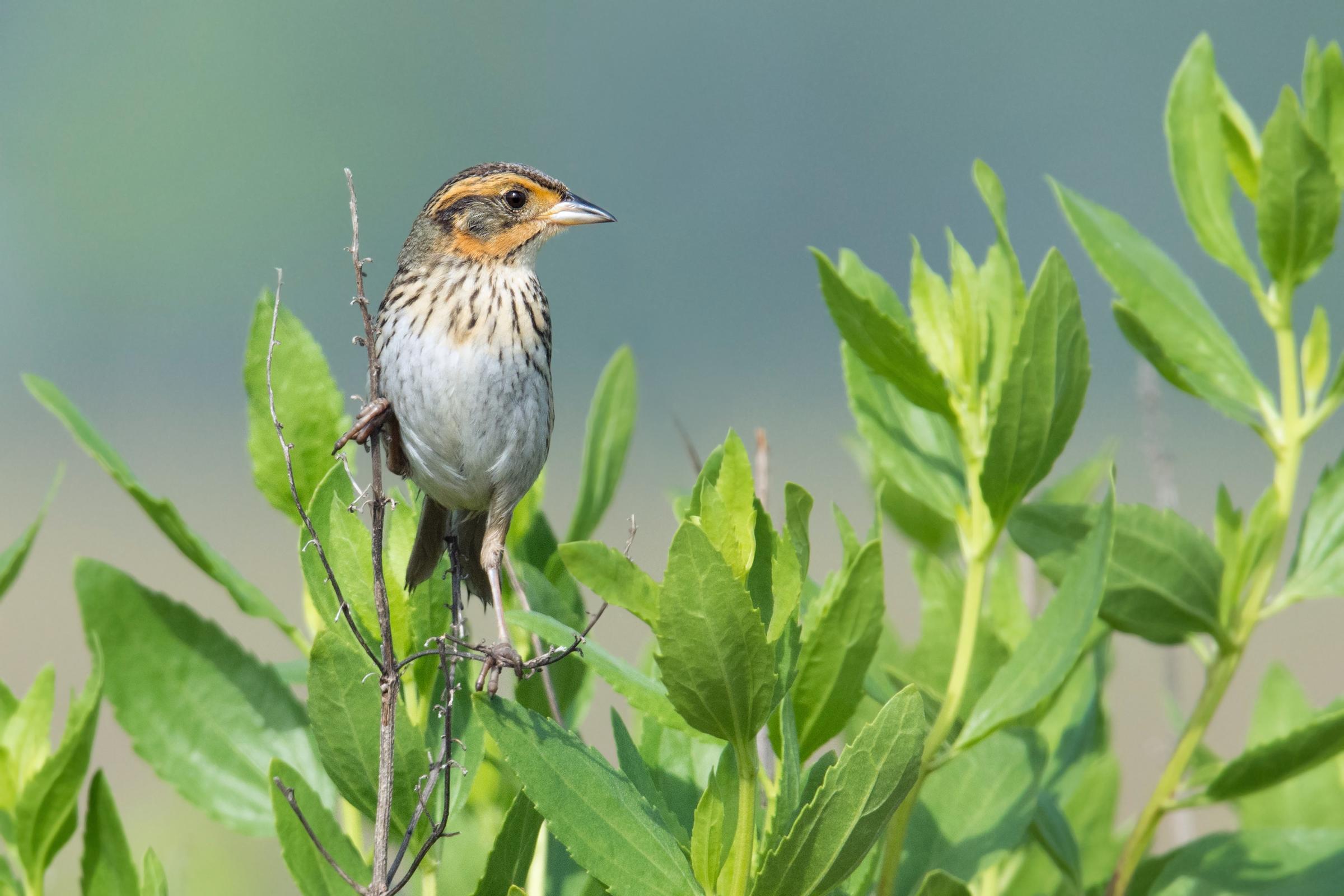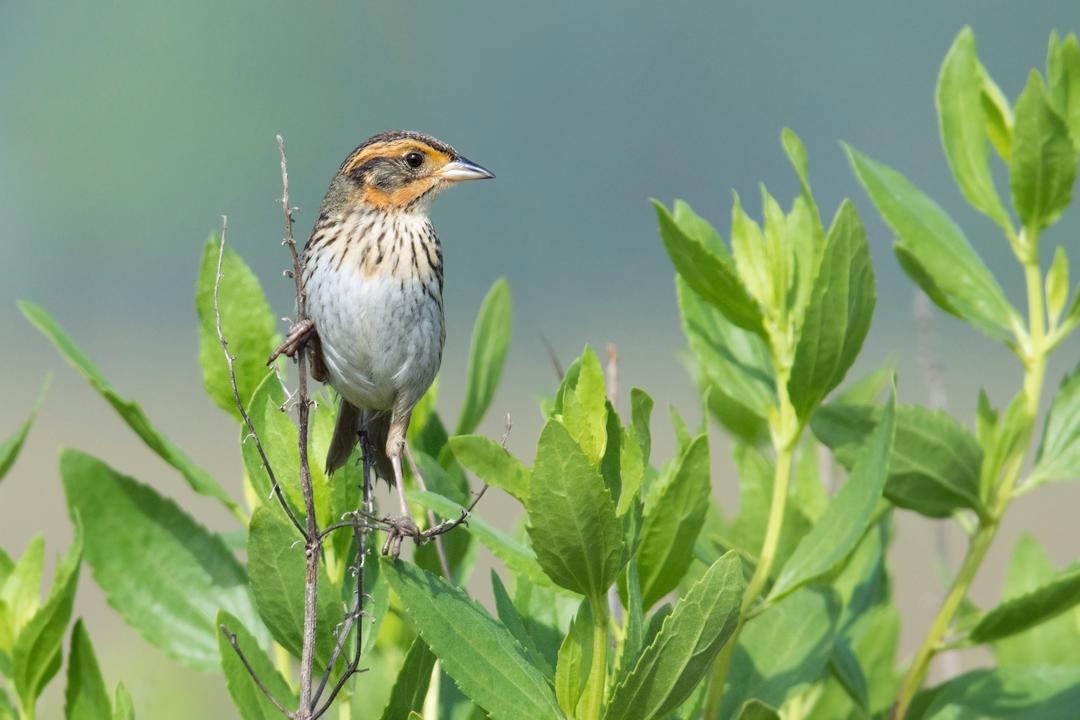The Saltmarsh Sparrow's population has significantly declined in many regions; an estimated 80% of the population has disappeared in the last 15 years.
This "canary on the coastline" shines a spotlight on the growing need to restore high marsh habitat to protect birds and people from increased flooding and more frequent storms. Its rapidly declining populations tell us that we are losing essential ground.
PRIMARY THREATS: A WARNING SONG
In the densely-populated Long Island/NYC region, coastal habitats for wildlife are being squeezed by rising seas on one side and development (homes, seawalls, roadways, and other hard structures) on the other.
As a result, Saltmarsh Sparrow nests are failing at astonishing rates.
Saltmarsh Sparrow nests are built atop clumps of cordgrasses within areas of high marsh. This species is well adapted to survive small flooding events (eggs can survive short periods of inundation and older chicks can often climb to safety to clumps of grass above their nests), but sea level rise is causing more frequent and intense flooding, resulting in failed nests.
The decline of this species is in direct correlation to the decline of salt marshes across western Long Island. In the last century, these salt marshes have suffered losses of over 75% between 1900 and 1970 and continue to decline at rates of 0.5 to 3% per year (Hartig et al. 2002). This puts local communities and homes at risk as well.
KEY OPPORTUNITIES FOR ACTION
To mitigate the effects of rising water on Long Island's marshes and local communities, Audubon New York and partners are focusing on new projects to improve coastal resiliency.
Since much of the New York coastline has been developed, the current potential for marshes to "migrate," or naturally shift and transition in reaction to sea level rise, is limited. To protect undeveloped coastal areas and facilitate marsh migration, we must take advantage of buyouts and coastal retreat planning efforts, restore essential habitats, and focus on providing a matrix of low, high, and upland marsh zones so salt marshes can do what they naturally do best--migrate and adapt.
New York has the 4th highest abundance of breeding Saltmarsh Sparrows in the Northeast. Actions that benefit this bird will result in healthier marshes, which in turn will protect local communities.
Click here to learn more about our salt marsh projects currently underway!
HOW AND WHERE TO SPOT IT
The majority of Saltmarsh Sparrows breeding in New York are found on Long Island (5000 individuals est.) (Wiest et al., 2016). Additional nesting sites in the NYC area include Sawmill Creek (Staten Island), Idlewild (Queens), and Four Sparrow Marsh (Brooklyn) (Ruskin et al., 2017).
Recent sightings in NY, according to eBird, place this species at:
Cupsogue Beach County Park, Suffolk County
Crab Meadow Beach, Suffolk County
Pelham Bay Park, Bronx
Plum Beach, Kings County
Randall's Island, Manhattan
FUN FACTS!
- Only the male birds sing. Their song is complex, but very quiet, with a wheezy or whispered quality.
- Their eggs are greenish white to pale blue-green, heavily dotted with reddish-brown. They often have two broods per year.
- The young leave the nest about 8-11 days after hatching, but may remain with female for another 2-3 weeks.






